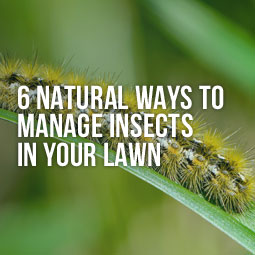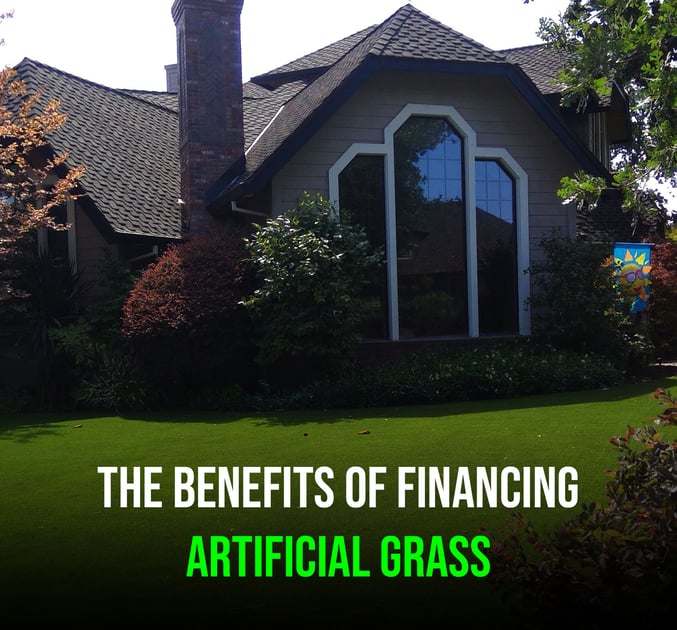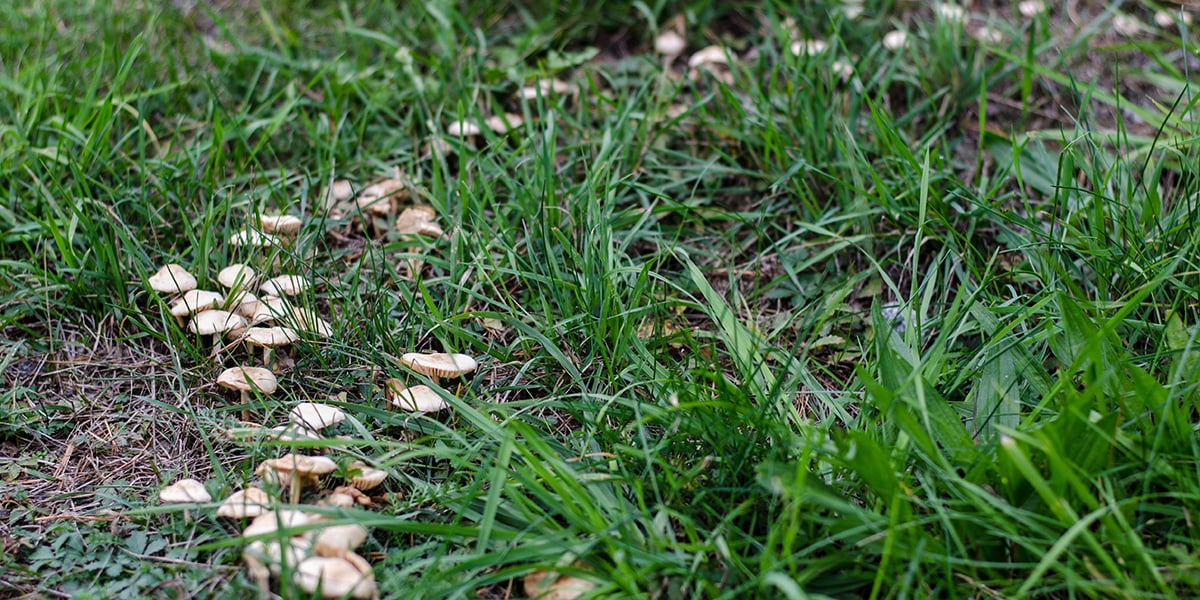
Having a lawn can make your entire landscape look prettier and beautifully coordinated. But most of us consider our lawn a play area as well. When insects invade our grassy space, they can ravage the aesthetic value of our lawn and turn outdoor living into a truly unpleasant experience.
According to the University of California, “Insect feeding can cause grass to turn yellow or brown or die, especially if the grass is already stressed. Damage usually begins in small, scattered patches, which may merge into large dead areas.” Furthermore, they add that vertebrate predators such as raccoons, moles, and birds “may be attracted to turf infested by insects, especially white grubs in autumn, and cause further damage by uprooting grass in search of their prey.”
If any of that sounds familiar, you are not alone. Summer’s just around the corner, so let’s make this the year we manage insects successfully, so we can manage to enjoy our yard!
1. Bug ID
The first order of business is to identify which insects are causing problems. Common culprits include:
- Caterpillars that feed on grass roots, crowns, and leaves
- Grubs
- Billbugs (sometimes called sowbugs) and their larvae
- Chinch bugs
- Leafhoppers (though they are rarely populous enough to cause damage)
- Lawn gnats (also called fungus gnats)
You can also get the low-down on all manner of unpleasant creatures that wreak havoc in your lawn and garden (not just insects) here. The best way to manage insects depends on the variety and the type of damage they cause.
2. Pests that Bug People and Pets
We all know mosquitoes breed in standing water, so you’re probably careful about not letting water puddle up in buckets or other containers around your yard. But mosquitoes can also breed in the wet areas of your natural grass, especially if you have shady spots that don’t drain well.
Fleas also love to hang out in natural grass, just waiting to ambush your poor unsuspecting dog or cat. And you know what happens next. They catch a ride into your home where they can, well, make themselves at home sucking the blood out of pets and humans alike. Ugh!
The first line of defense when it comes to fleas – and the best for all concerned – is commercial flea/tick/mosquito medication. Talk to your vet. The product won’t be natural, but these pests carry diseases that are dangerous to pets and people alike. On the natural side, you can try making a citrus-based repellent. Boil lemons and let the liquid rest overnight, then spray it on your dog or cat.
3. Natural Remedies
You can find all sorts of insecticides at any home improvement store or garden center. Those products work well, but they harm a lot more than the insects you want to target. They can get on your kids and pets, and they wash away into our groundwater and the Bay. Fortunately, there are a growing number of natural, environmentally ways to discourage unwanted insects in your lawn.
Among the most popular are biological controls. Bacillus thuringiensis is a soil-borne bacterium that kills gnat, fly, and mosquito larvae but is entirely safe otherwise. You can also buy a spray solution that contains tiny predaceous nematodes that will feast on gnat larvae.
Home remedies abound, too, though they may not be the most inviting if you want to play on your lawn. For example, you can sprinkle garlic powder on the grass, make a spray by pureeing garlic, onion and cayenne with water, or mix baby shampoo with water and spray that on your grass. Target mosquitoes with a spray made from lemon-scented dish soap and ammonia.
4. Team Up with Beneficial Bugs
Try to avoid wholesale slaughter, though. Not all insects are bad news for your yard. Ideally, the measures you take to send unwanted pests packing should not also eradicate ladybugs, green lacewings, praying mantis or other beneficial insect neighbors. They’re on your side, because they eat those bugs you don’t want.
5. Natural Lawn Maintenance
Along with tackling your insect problems directly, boosting your lawn’s health will discourage infestations. You can DIY a natural lawn fertilizer from inexpensive household products. The folks at the University of California also suggest you choose an appropriate variety of natural grass, to help avoid insect and other problems in the first place.
We have an even better idea.
6. Choose the Best Variety of All – Artificial Grass
While artificial turf is gorgeous and inviting for people and pets, it is no fun at all for insects and other unwanted visitors. Puddles don’t form. The grass dries quickly. There’s no soil or thatch. Nothing to tempt moisture-loving or soil-borne pests. There is no pestiferous lawn maintenance required, either. Just beautifully sustainable lawn that invites you to enjoy it up close, insect-free.












